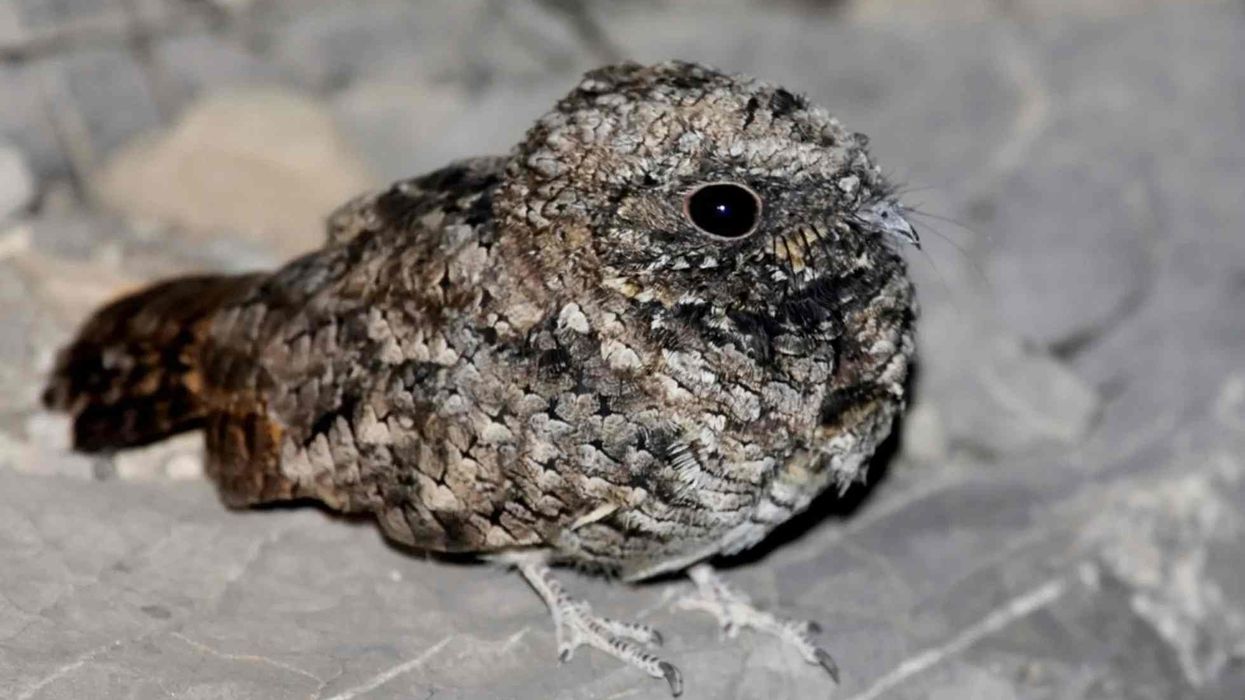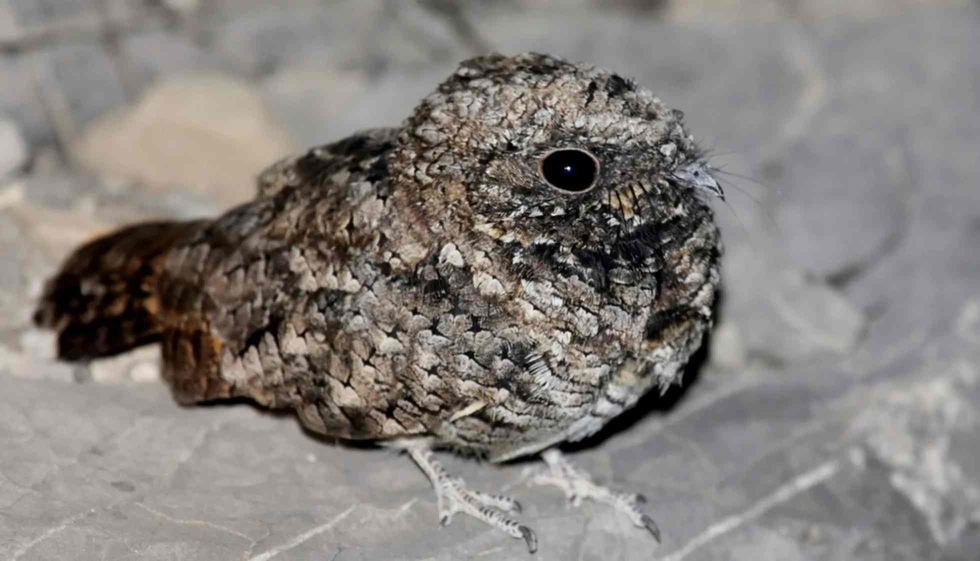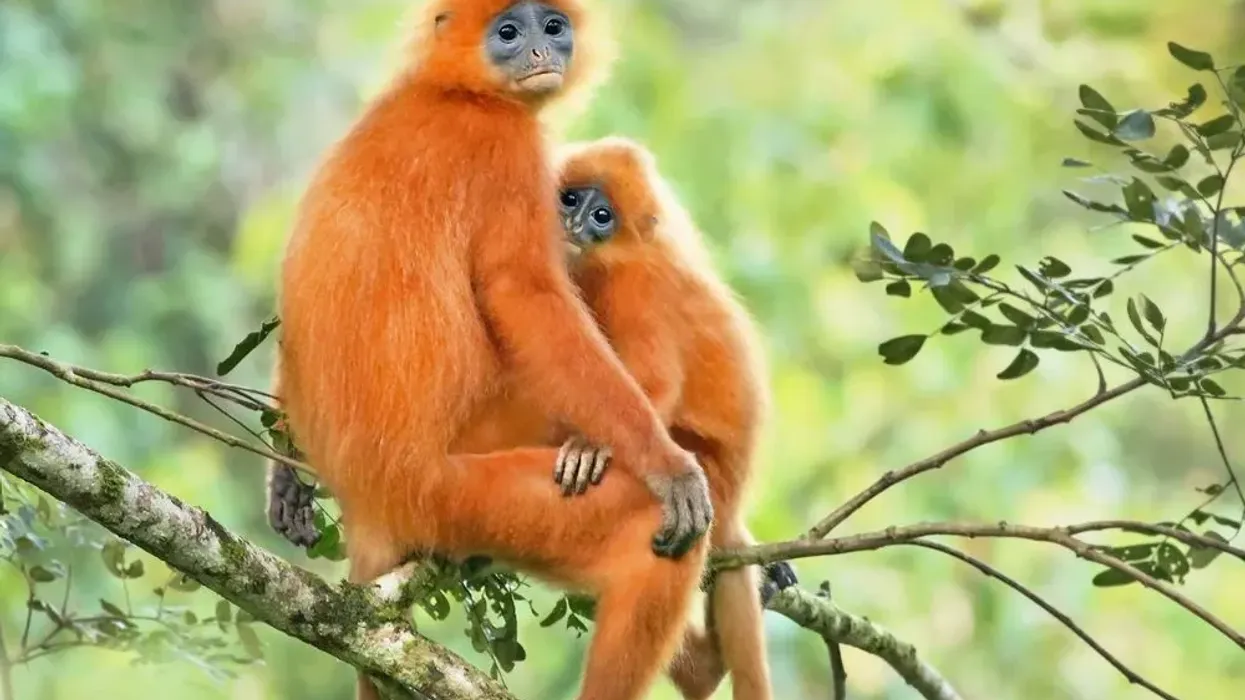Have you ever wondered about the bird that sings a repeated note of 'poor-will-low', on warm nights in summer when the background is calm? When trying to spot it, following its song can be adventurous as its habitat are pretty challenging to reach.
But you need not worry, our article can help you know the night bird of your interest, which is the Common poorwill (Phalaenoptilus nuttallii) that chants its name throughout the night, maybe in pursuit of a mate.
It is the smallest nocturnal bird of the family of nightjars which loves to stay in dry regions and mountain foothills where the vegetation is less. The bird's geographical range is between British Columbia and southeastern Alberta through the western United States and northern Mexico. The Whip-Poorwill of eastern North America is a similar species to this bird.
The bird of this species has a unique feature of hibernating for long periods may be weeks to months. They positively impact human life as they feed on flying insects like moths and beetles and help protect crops.
You can learn more exciting facts about the poorwill as you go through our article. If you are a bird lover, do not miss the other articles on the Blackburnian Warbler and Blue Tit.
Common Poorwill Interesting Facts
What type of animal is a Common Poorwill?
A Common poorwill (Phalenoptilus nuttallii) is a small nocturnal bird of North America of the family Caprimulgidae, which in general is the nightjars family.
What class of animal does a Common Poorwill belong to?
Common poorwills belong to the class of Aves.
How many Common Poorwills are there in the world?
The approximate breeding population of Common poorwills across the world is 1.4 million.
Where does a Common Poorwill live?
A Common poorwill (Phalaenoptilus nuttallii) lives in arid open regions consisting of shrubs and grasses and rocky foothills. In Mexico and the western US, their habitat is a rocky area with dispersed bushes, desert environments, plateaus, and foothills at an altitude between 1000-7000 ft.
What is a Common Poorwill's habitat?
A Common poorwill's habitat is dry open areas with shrubs and mountain foothills with less vegetation. Their habitat on the Eastern side of their range is open lands with copses of aspen or spruce.
Who do Common Poorwills live with?
Common poorwills live a solitary life and live in monogamous pairs only for one breeding season. They are also territorial and defend their territories aggressively against other birds and intruders.
How long does a Common Poorwill live?
A Common poorwill (Phalaenoptilus nuttallii) bird lives as long as three years.
How do they reproduce?
Common poorwills reproduce by laying eggs. After returning to their breeding range in the spring season, the male bird starts forming territories and defends aggressively against other males.
Both female and male birds call out to each other from dusk to dawn with songs to initiate mating. A Common poorwill sound consists of repeated notes of 'poor-will-low' from which its name is derived.
The breeding season of the south range is between March and August, while that of the north range is between May and September. These North American birds form monogamous pairs for a single breeding season.
These birds do not build any nests. Their nesting area is open areas at the foot of the hills, where they scrape the ground to form a shallow space that is partially covered by bushes or some grass.
After mating, the female bird lays eggs in a clutch of size two. The eggs of these birds are white, creamy, or pinkish. The incubation period of the eggs of this bird is 21-22 days, and both parent birds incubate them.
Both parent birds feed the young with insects. The young birds take more than 20-23 days to fledge and take their first flight.
These birds usually brood only once a year, but sometimes they may lay another clutch 100 m away from the first nest. The female incubates the second brood of eggs while the male continues nesting with the young from the first brood.
These birds are known to move their nest and young to short distances if they sense any predators. The young birds get reproductive maturity at about one year.
Sometimes they enter torpor at the same time as incubation. This saves their energy but reduces the success rate of hatching.
What is their conservation status?
The conservation status of these birds is ‘Least Concern’, as per IUCN. However, as per Partners in Flight, their population has decreased by nearly 29 % between the years 1970 and 2017. Habitat loss due to urbanization and vehicle strikes at night are the reasons for the declining population.
Common Poorwill Fun Facts
What do Common Poorwills look like?
Common poorwills are the smallest North American birds of the nightjar family with short legs, small bills, and long rounded wings that reach the tip of the tail when folded. Nighthawks which are similar species of nightjars are larger and have longer bills.
The female and male birds look similar to black and gray patterns, more like a dead leaf. The outer tail feathers tips and collar are white. The young birds resemble the adults.
How cute are they?
They are cute little birds with big eyes and large heads for their size. It is pretty difficult to identify these gray and black-colored birds as they stay camouflaged on the ground and look like rocks.
How do they communicate?
The birds of the species are more heard than seen as they are nocturnal. They make sounds and calls to communicate with other birds or to invite the opposite sex for mating.
During the breeding season, the male sings with repeated notes sounding like 'poor -will-low'. This bird makes growling, hissing, and barking calls when disturbed by intruders. The Common poorwill in flight makes the chuck note and wing clapping sound when flushed away.
How big is the Common Poorwill?
This North American bird is nearly 7.1 in (18 cm) long and has a wingspan of 12 in (30.5 cm). It is smaller than a Common nighthawk and larger than a Western wood-pewee.
How fast can a Common Poorwill fly?
A poorwill usually flies very fast, but its exact velocity is unknown as they are active during the night. The speed at which it flies varies depending on the reason for flying. They may fly very fast to escape predators and a little low and slow to catch the prey.
How much does a Common Poorwill weigh?
They weigh nearly 1.3-2 oz (36-58 g). Females are a little larger than males.
What are the male and female names of the species?
The female and male birds of the species do not have any specific names.
What would you call a baby Common Poorwill?
The baby bird species has no specific name, and they are just called hatchlings.
What do they eat?
The bird of this species feeds on night-flying insects like grasshoppers, moths, and beetles. They vomit the indigestible parts of these insects, just like an owl.
They forage for insects by sitting on low perch and taking prey off the ground. They are known to drink water on the wing. They sometimes eat insects like spiders directly from the ground where they are nesting.
Are they dangerous?
They are not dangerous but are quite aggressive and chase away intruders by making hissing sounds like snakes.
Would they make a good pet?
They can be made a pet. Since they are wild birds, their captive habitat has to reflect their natural habitat to make them happy pets. A bird loves to fly free rather than be kept in cages, it is not advisable to pet them.
Did you know...
The Common poorwill (Phalaenoptilus nuttallii) is the only bird that hibernates for a long time.
Few other bird species enter semi-hibernation, but for a very short period, when food is scarce, they are mousebirds, swifts, hummingbirds, and manakins.
Common Poorwill hibernation
The Common poorwill is the one bird known to go into torpor, a state of hibernation, for long periods of weeks to months. They hibernate during winter and stay inactive for the whole time by hiding in piles of rocks at the foothills.
This behavior is seen in the southern part of their range in the United States.
The northern part of their range migrates to the south to spend winter in warmer climates instead of going into torpor. Some cases of the torpor of this bird have been noticed in New Mexico and California.
The state of torpor in this bird was explained by Dr. Edmund Jaeger in the year 1948, after observing a poorwill bird hibernating in the Chuckwalla Mountains of California for two years.
In 1804, Meriwether Lewis discovered hibernating poorwills in North Dakota and penned them clearly in his journal. Even before the biologists and explorers, the people of the Native American tribe called Hopi, have observed hibernation in these birds and hence named them Holchko, which means the sleeping one.
They enter torpor during winter when the weather is harsh, and insects are scarce to save themselves from hunger and climate. During this hibernation, their body temperature, heart rate, and metabolism rate are decreased, helping the bird cope with hunger and cold.
They can drop the body temperature to as low as 40 degrees Fahrenheit and heart rate to as low as 10 bpm.
They become active in spring when the climate is warm and can find plenty of insects to eat. Torpor can also be induced in captivative birds by stopping food and decreasing temperature.
What sounds do Common Poorwills make?
The Common poorwill call has repeated notes of 'poor-will-low' from which they got their name. They also make a hissing sound like a snake to chase away the intruders. They make wing clapping and chuck sounds during flight.
Here at Kidadl, we have carefully created lots of interesting family-friendly animal facts for everyone to discover! Learn more about some other birds from our belted kingfisher interesting facts and hooded oriole fun facts pages.
You can even occupy yourself at home by coloring in one of our free printable common Poorwill coloring pages.










